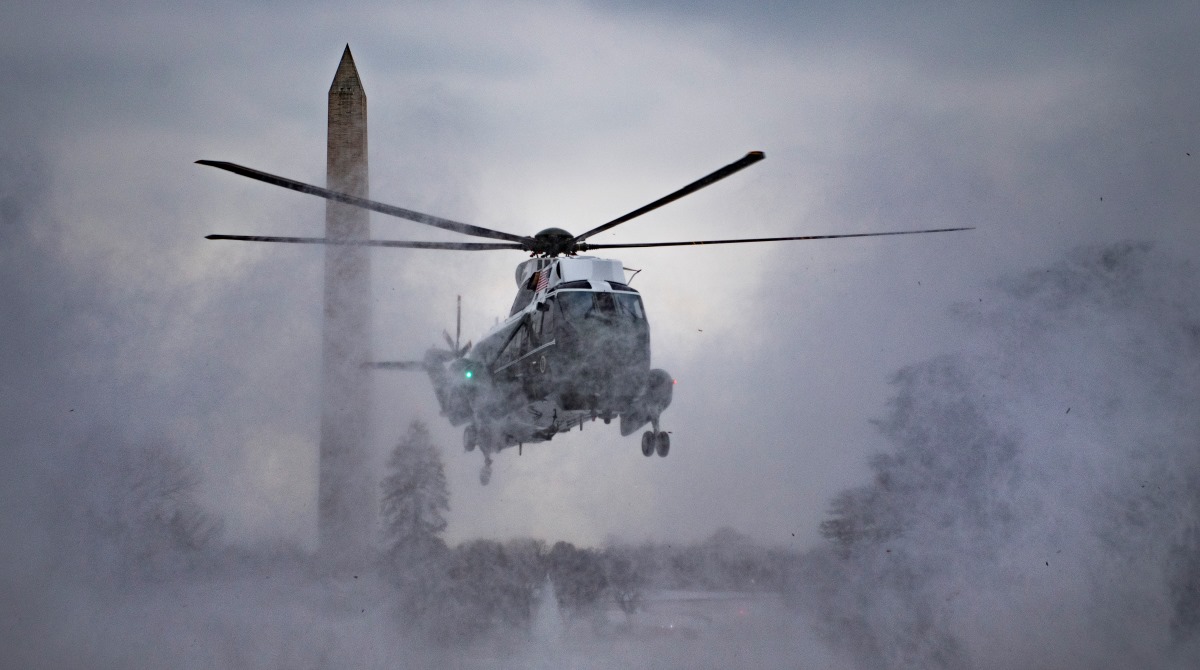Second US judge rules against Trump administration’s restrictions on TikTok
US District Judge Carl Nichols said that "the government likely exceeded IEEPA's express limitations."
The decision to suspend the 1987 Intermediate- Range Nuclear Forces Treaty (INF) has the potential to ignite a new arms race not only between the US and Russia but also with China, which was never a signatory to the treaty.

Marine One kicks up snow as it lands on the South Lawn of the White House in Washington, DC, on February 1, 2019 to convey US President Donald Trump to Andrews Air Force Base in neighboring Maryland. (Photo by Jim WATSON / AFP)
It is hard not to wonder whether a new arms race is on the anvil. As much has been the dominant impression of the comity of nations in the aftermath of the suspension by the Trump administration of the last major nuclear arms control treaty with Russia. Friday’s announcement by US Secretary of State Mike Pompeo was made just ahead of the deadline to Moscow on compliance with the treaty.
This was quite a robust expression of diplomacy in the midst of the closure of the US government, though the two are not inter-related.
The decision has the potential to ignite a new arms race, not only with Russia, but also with China, which was never a signatory to the 1987 Intermediate- Range Nuclear Forces Treaty (INF). The consequence can be awesome indeed. On closer reflection, the nuclear proliferation in several countries, notably North Korea and Iran, is not wholly unrelated to the build-up of America’s first long-range weapons since 1991. Ergo, the parallel developments can be contextualised not the least because both initiatives signal the end of more than half-acentury of traditional nuclear arms control.
Advertisement
The agreement, that dates back to the Cold War era, has now been reduced to irrelevance. Nor for that matter does President Trump’s rhetorical flourish inspire hope ~ “I hope we’re able to get everybody in a big, beautiful room and do a new treaty that would be much better.”
That signal of intent stops short of an explicit definition of “everybody.” On either side of the Atlantic, geostrategies will be in a flux for some time yet. The Trump administration has made it clear that it is seeking a new strategy that would revive the treaty… but only if all countries that now field such weapons are willing to curb or eliminate them.
This is a decidedly ambitious agenda and is easier proposed than accomplished. It will require China, India, Pakistan, Iran and North Korea to sign the same agreement ~ much tougher than negotiating a bilateral treaty between Russia and the United States. Both countries still possess, by far, the world’s largest nuclear arsenals.
The current agreement applies only to Russia and the US. It is far from clear whether President Trump plans to replace the INF or to renew another major treaty, called “New Start”, which drove American and Russian nuclear arsenals to their lowest levels in nearly 60 years. That accord expires in 2021, just weeks after the next presidential inaugural. The Kremlin has swiftly portrayed the US as the “nation at fault”, couched in the charge that American missile defence interceptors in Eastern Europe could be easily refashioned into offensive weapons.
Furthermore, the armed drones, which had not been invented when the treaty was signed, now threaten to provide Washington with similar intermediate-range ability without violating the precise wording of the treaty. While the outlook is fogbound, the alarums within are fearsome enough.
Advertisement